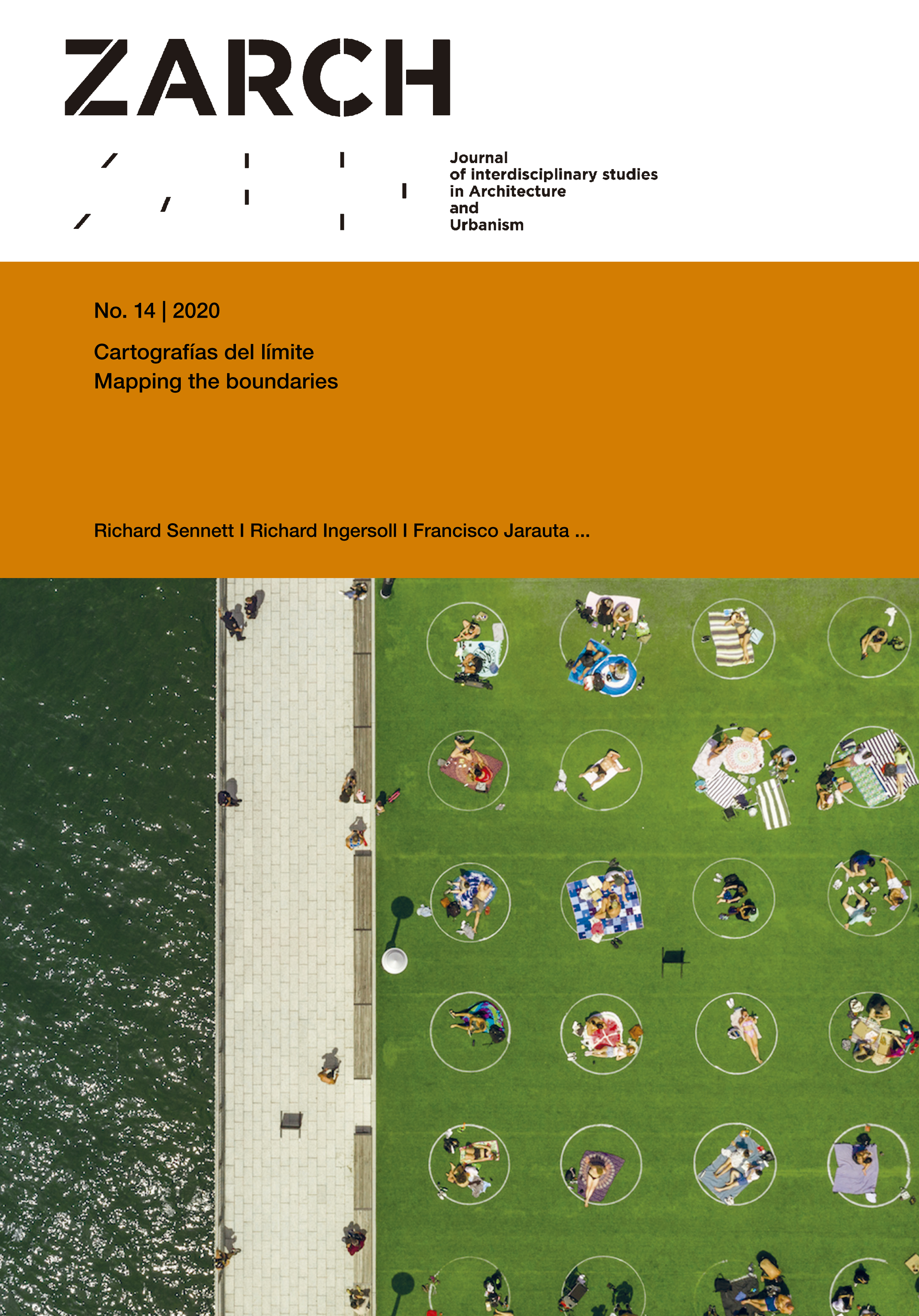Think like a forest. Diluting the boundaries between nature and city
DOI:
https://doi.org/10.26754/ojs_zarch/zarch.2020144441Keywords:
Natural boundaries, Urban forestry, Green washing, Biomimetic architecture, Carbon footprintAbstract
To make the city biomimetic does not mean necessarily to copy nature, but rather to pursue processes analogous to natural ones, diluting the boundaries between nature and cit. Thinking like a forest when approaching urbanism, might lead to sympathize with natural boundaries. The title of this paper reprises a short chapter, “Thinking like a Mountain”, by the great American ecologist Aldo Leopold, published in The Sand County Almanac in 1949. The first part of the paper recall how the relationship between nature and architecture has been understood in the past, quoting some theories, from Abbé Laugier to Christopher Alexander, to Gilles Deleuze, to Peter Wohlleben. In the second part of the paper some reflections are made on a selection of projects that since the 1970s have sought to mitigate the destructive effects of the city on the ecology proposing a closer relationship with nature.
Downloads
References
Alexander, Christopher. 1965. A city is not a tree. Architectural forum 122 vol. 1 (April): 58-62; vol. 2 (May): 58-62.
Clement, Gilles. 2004. Manifeste du Tiers paysage. Paris: Sujet/Objet.
Deleuze, Gilles and Guattari, Felix. 1992. A Thousand Plateaus: Capitalism and Schizophrenia [Mille Plateaux: Capitalisme et Schizophrénie, 1980]. London: The Athlone Press.
Harrison, Robert Pogue. 1992. Forests, the Shadow of Civilization. Chicago: University of Chicago Press.
Laugier, Marc-Antoine. 1975. An Essay on Architecture [Essai sur l'Architecture, 1753]. Los Angeles: Hennessey & Ingalls.
Le Corbusier. 1987. Voyage to the Orient, [Le Voyage d'Orient, 1965]. Cambridge,Mass.: MIT Press.
Leopold, Aldo. 1949. A Sand County Almanac. New York : Oxford University Press.
Lucretius. 1936. On the Nature of Things [De Rerum Natura, 1st century B.C.]. Oxford: Clarendon Press.
Mancuso, Stefano and Viola, Alessandra. 2015. Brilliant Green: the Surprising History and Science of Plant Intelligence [Verde Brillante: Sensibilità e Intelligenza del Mondo Vegetale, 2013]. Washington D. C.: Island Press.
McHarg, Ian. 1969. Design with Nature. Garden City, N.J.: The Natural History Press.
Thoreau, Henry David. 1862. Walking. The Atlantic Monthly (June): 658-674.
Wohlleben, Peter. 2016. The Hidden Life of Tree [Das geheime Leben der Bäume, 2015]. London: William Collins.


